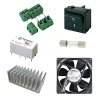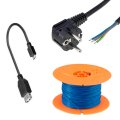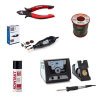
In the previous issue of SOS news magazine, we asked the company's CEO, Ján Seszták, a question that, in his own words, surprised him. And therefore, if you'll allow me, I'll ask you the same question. How are you?

It's probably going to become something like a relay baton… You surprised me too, but thank you, I'm fine. In these fast times, where the market situation changes from hour to hour, I am also in a bit of a hurry and always alert. We are all healthy, goals and objectives are being met, and management is satisfied, so I would say everybody is happy.
You are part of the SOS electronic purchasing department for more than 10 years, of which two years you are the purchasing department manager. How has the world of electronic components changed in your experience throughout that time?
Quite a lot. The electronics and electrical engineering sector are a large and attractive market. Thanks to the legislation, the world is striving mainly for higher fuel or energy efficiency. It has stimulated the growth of electronics, especially in the automotive, construction and lighting sectors. Industrial production has become "intelligent" and increasingly automated. The ageing population (not only the European) and the pressures for more efficient healthcare costs have also increased the demand for e-innovations in this sector. Let’s not forget the IoT, which affects all types of technological applications and equipment, from the automotive industry to consumer electronics. There are several electronic components that enable IoT technology, and the key components are fieldbuses, cabling, communication modules for data and information transfer, as well as electric motors and, of course, software. These are the product areas where the biggest changes have taken place, ultimately aimed at increasing user comfort, functionality, and efficiency.
The last two years have been very turbulent. How have the two major events of recent days and years affected the delivery of components?
The Covid-19 pandemic has undoubtedly affected many industries, including electronics, healthcare, and tourism. It has hit the electronics industry hard as the supply chain has been severely disrupted. Despite the gradual easing of restrictions in individual countries, we are still feeling the effects of the health crisis on the electronics industry. Currently, there is a great shortage of semiconductors, and electronic components that are found in every modern electronic system. The transition to home offices, the need for connectivity and a significant increase in the demand for electronic devices have led to an enormous demand for electronic components, which has had a major impact on delivery times and the price of the components themselves. There are currently three companies that rule the semiconductor manufacturing: Intel in the United States, Samsung in South Korea, and the Taiwan-based TSMC Group. Even the smallest problem that these companies face directly affects everyone who operates in our sector. During this crisis, manufacturers are trying to find alternatives and solutions to increase the resilience of their supply chains. The supply chain of the semiconductor industry, which has been severely affected during the covid period, may experience further problems because of the Russian-Ukrainian conflict. The conflict may affect the supply of neon and hexafluoro butadiene gases, which are necessary for the production of semiconductor chips, as the main producers of these gases are Ukraine and Russia. The shortage of semiconductors has affected industries all around the world, with the automotive and electronics industries being among the most affected.
In addition to these events, there is also a problem with the raw materials needed to produce the components. What is the impact on their supply?
The situation on the market with the raw materials needed to produce the components remains dynamic. The pandemic has disrupted operations in hundreds of mines all around the world, which causes a shortage of gold and silver. Prices of metals such as copper, gold, palladium, but also plastic are highly reactive to labor shortages caused by Covid and have an increasing trend, which ultimately increases component prices and prolongs delivery times. Whether it is net demand for certain types of technologies, a shortage of raw materials or logistical challenges, unfortunately, no one can yet predict when the delivery times and prices will return to pre-pandemic levels. This unprecedented demand continues to stimulate the need for raw materials and the gradual expansion of capacity, which leads to higher product prices in order to keep up with rising raw material prices and logistics costs. It is important to remember that possible future waves of Covid, natural disasters, geopolitical events or any other crisis may at any time affect and reduce the capacity of the raw materials market, which may lead to the increase of raw material prices and ultimately the component itself. In general, the situation on the raw materials markets is not getting better and a negative trend is still noticeable in terms of longer delivery times, rising prices and a shortage of materials on the market. Record-long delivery times for raw materials, a widespread shortage of critical base materials, rising commodity prices and difficulties in transporting products continue to affect all segments of the economy.
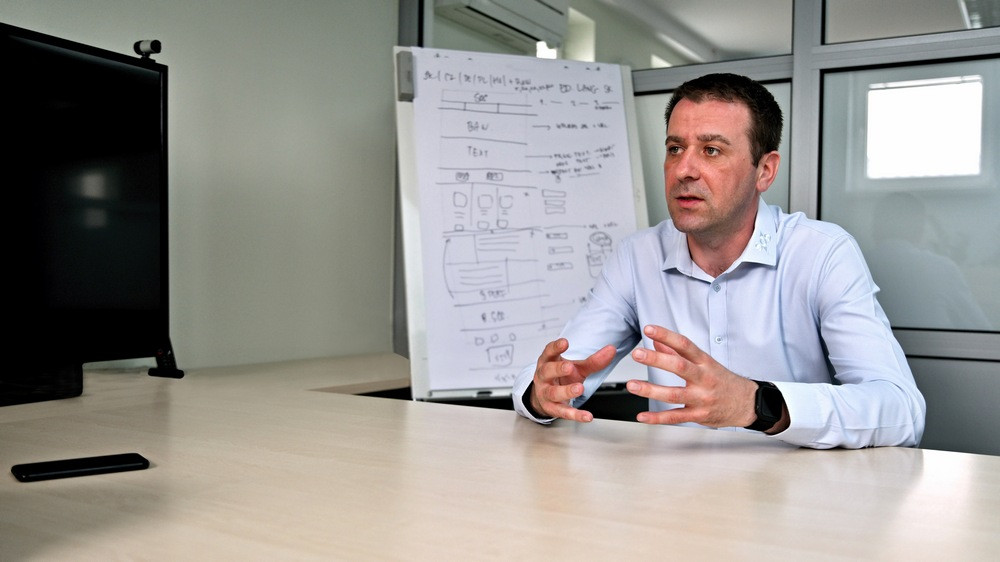 The media presents that there is a shortage of chips. What is it about? How does SOS electronic respond to this problem?
The media presents that there is a shortage of chips. What is it about? How does SOS electronic respond to this problem?

The reason lies in the enormous increase in demand for electronic products, which is so high and unpredictable that supply chains are unable to keep up and they need to wait until the demand drops to a more manageable level or until the problem with higher capacity in the supply chain is resolved. The first shortage of electronic components occurred already in 2019. In order to alleviate the production problems caused by the US economic embargo on China, Chinese companies stocked huge quantities of components. A few months later, with the outbreak of the COVID-19 pandemic, the electronics world felt painfully dependent on China for primary products and manufacturing facilities, especially as cargo ports had to be closed. Natural disasters in Southeast Asia and the United States have forced the production of key semiconductor factories to stop, which made the situation even worse. The cold in Texas paralyzed the power supplies and plants of Infineon, Intel, NXP, Samsung and Texas Instruments. An earthquake and a fire in production destroyed the factory of Renesas, a world leader in microcontrollers. Taiwan has reported the worst drought in 56 years, and a government in China started to regulate electricity. Another problem is that only part of the enormous increase in orders in 2021 was caused by additional demand. A much larger share is caused by long delivery times, shortages, and so-called panic reservations. Those who can, make supplies to secure themselves against material shortages. Customers order more than they need and, if possible, from various suppliers in the hope that at least some of them will be able to cover their needs. The situation in the supply chain is the same, and thus suddenly the demand excessively increases without being covered by a corresponding increase in consumer demand. Economists call this situation the whip effect. We, of course, monitor the situation and communicate with our partners much more often. We are trying to order problematic components for which we can expect longer delivery times or the allocation itself in an increased quantity. We also monitor the overall market situation, based on which we then take the necessary steps for the smooth delivery of goods to our customers.
A rapidly changing world also requires a great deal of flexibility. How does the purchasing department at SOS electronic deal with this in terms of cooperation with suppliers? How do you decide to ensure that the offer is sufficiently current, but at the same time of high quality?
There are many factors influencing the choice of suppliers, and our company has been cooperating with many of them for a long time. Suppliers play a key role in achieving the goals and in the success of the company. For businesses to find and work with the right suppliers, they need to consider several critical factors, including price, value for money, quality, reliability, responsiveness, and adaptability. We approach the selection of components in our offer in the same way. We communicate with our suppliers and customers; we monitor market trends, and we also monitor indicators showing the direction in which the market is heading. Other departments, such as product managers and, of course, salespeople who are in contact with our customers, also participate in selecting the right products in our offer.
How do you make decisions in an array of information? You have to take into account not only external events but also customer feedback through the sales department. Is it even possible?
Customer feedback is essential for our future decisions, possible innovations and, for example, the composition of our warehouse too. It is also necessary to measure the satisfaction of current customers, whether regarding the quality of purchased goods, prices, but also the very availability of goods. Knowing how customers perceive our work, support and our company itself is invaluable. We regularly communicate with our salespeople, who are in direct contact with customers, and we receive feedback from them. During the pandemic, we held our meetings with customers online. Feedback and overall communication are important for long-term cooperation, helping us to prepare for future projects of our customers, and improving our work and service.
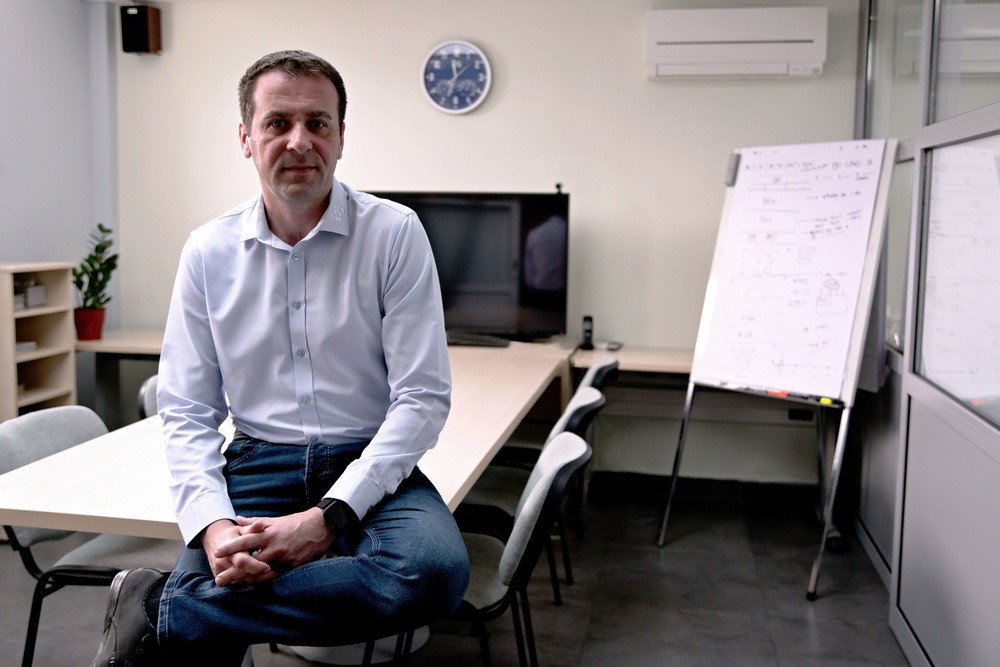 Let’s be honest: is it even possible to plan something in advance in these difficult and uncertain times?
Let’s be honest: is it even possible to plan something in advance in these difficult and uncertain times?

Of course, it is not easy. None of us, nor any of our partners or competitors, has a crystal ball :) Nevertheless, it is very important for the purchasing department to minimize purchasing costs while maintaining quality and quantity standards. A procurement plan is a process in which a company decides what needs to be bought, where to buy it, and when and in what quantity the goods need to be delivered. Many departments within our company are involved in the procurement process to achieve efficiency in decision-making processes. A well-planned procurement process should meet the needs of the company through a smooth flow of the supply chain. In order to implement a successful procurement system, the company must comply with procurement planning requirements, including the identification of the needs of individual goods, proper searching and selection of suppliers, comparison of individual offers, identification and elimination of the risk, being in contact with the supplier and regular evaluation of suppliers.
So how is it possible to distinguish between high-quality and low-quality suppliers at such a pace?
The right choice of supplier is crucial. It is possible to build a lasting and mutually beneficial relationship only based on the right choice. Poor supplier selection can have economic impacts on society. It is not difficult to find a supplier who offers goods at reasonable prices. However, later we may realize that the quality of their products does not meet our expectations, or they do not inform us about the progress of our orders, etc. Choosing the wrong supplier can cause increased costs, delivery delays or even damage of the company's reputation. When selecting new suppliers, we try to thoroughly check our high requirements and we monitor various factors and criteria for the existing ones which we then use for regular evaluation. Based on this evaluation, they are assigned different statuses and further cooperation is decided.
The pandemic speeded up the digitization and meetings moved to the online space. How did your department deal with the fact that personal contact with suppliers was no longer possible?
Effective communication has always been the key to all healthy relationships, whether it is internal communication or communication with our partners. During lockdowns, mandatory quarantines and home offices, people quickly mastered online communication tools. Work-related tasks or meetings that were believed that they could only be performed in person at the office were moved to the online space. Since personal meetings were not possible, our company has prepared the tools thanks to which we were able to connect with suppliers and work together over great distances. That was not possible a few years ago. In recent years, our company has taken many important steps in the field of digitization, and therefore the transition to home offices has been very quick and smooth. Our partners reacted in the same way, so communication and meetings online were and still are without any problems. Of course, we prefer personal meetings, and we are always very happy to welcome our partners, whether suppliers or our customers, to our premises.
Allocation in brief :)
Higher demand for consumer electronics, smartphones, increased demand in the global 5G sector, the Internet of Things, and major changes in the automotive industry (increased production of electric and autonomous vehicles). All these changes in combination with the freezing of the economy in 2020 are causing a much higher demand for electronic components. It is a situation where the demand for the product exceeds the available production capacity. The allocation results in extended delivery times, which is reflected in problems with component availability, rising prices, increased shipping fees and the need to look for components on the open market.
ARCHIVE:
Please, introduce your team. What have you been through over all those years?
Our team consists of nine members, who are divided into two groups. The first group, consisting of three members, is responsible for logistics, customs procedures, communication with transport companies and the provision of administrative documents for the economic department. The second group consists of buyers and, if I count correctly, there are six of them. :) They are responsible for purchasing goods and communication with suppliers. Every team member has been working at SOS electronic for several years. The "youngest member" is with us for 4 years and the longest-serving even for 27 years. They are professionals I can always rely on. The biggest advantage of our team is open communication, constructive criticism, and mutual knowledge sharing.
Are you interested in more information? Or do you have another question or request? Fill in the following form, we will be happy to help you.
Do you like our articles? Do not miss any of them! You do not have to worry about anything, we will arrange delivery to you.






